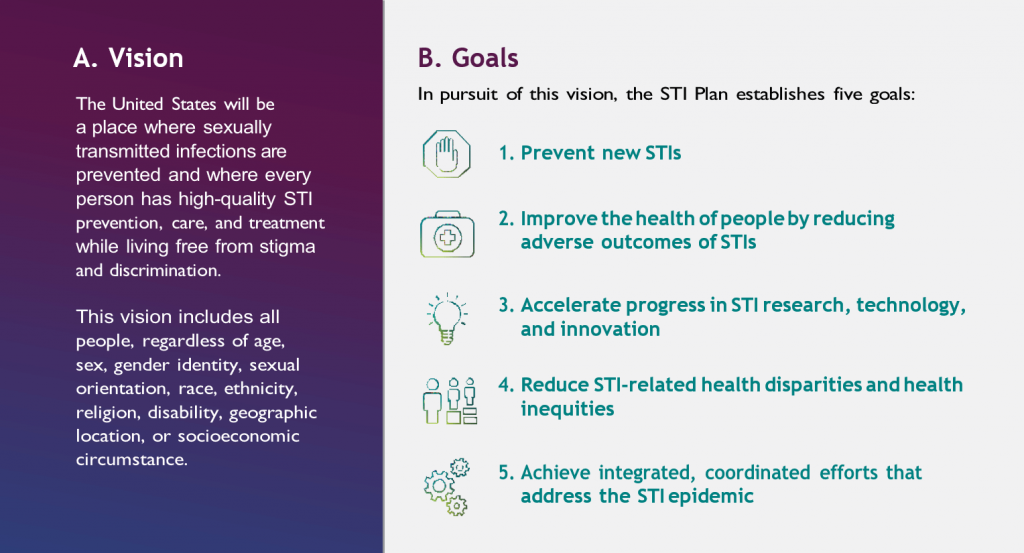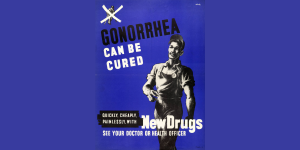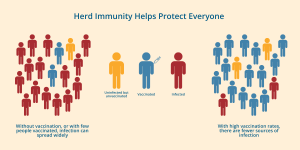
There Are Two New Drugs to Treat Gonorrhea
The FDA approved two new drugs to treat gonorrhea The new drugs—gepotidacin and zoliflodacin—are both new kinds of antibiotics and represent the first completely new treatment options in over thirty years.

The Department of Health and Human Services (HHS) recently updated the Sexually Transmitted Infections National Strategic Plan for the United States: 2021–2025 to include an addendum on herpes (HSV). HSV is widespread in the United States. An estimated 18.5 million adults are infected with HSV-2, which primarily causes genital herpes. It is also estimated that 48% of people ages 14 to 49 have HSV-1 which can cause either oral or genital herpes.
The STI Plan, first released in 2020, sets out a roadmap for preventing and controlling four of the most common STIs: chlamydia, gonorrhea, syphilis, and human papillomavirus (HPV). HSV was not originally included. In 2022, Congress directed HHS to amend the plan to address the prevention and treatment of herpes.
There are many challenges that come with preventing and treating HSV.
The HSV Addendum integrates the latest science in HSV diagnostics, prevention, care, and treatment into the STI Plan in the hopes of overcoming these challenges.
It also prioritizes federal action steps in each of these areas and identifies the agencies responsible for each. These action steps are integrated into the five goals of the STI plan which including preventing new infections, reducing the adverse outcomes of STIs, accelerating STI research and innovation, reducing STI-related health disparities, and coordinating efforts to address the STI epidemic.

In addition to spelling out direct actions that HHS will take, the HSV Addendum is meant to provide a foundation for a broad range of collaborators address challenges of HSV. You can read the HSV Addendum in full here. Future iterations of the STI Plan will incorporate HSV directly.

The FDA approved two new drugs to treat gonorrhea The new drugs—gepotidacin and zoliflodacin—are both new kinds of antibiotics and represent the first completely new treatment options in over thirty years.

The American Cancer Society (ACS) released new recommendations for cervical cancer screening that focus on HPV testing and approve the use of self-collected samples. The recommendations also clarify the age at which screening should start and stop.

Public health officials in England announced that they have identified a new combined type of mpox. Tests show the virus was a unique mix of the two known types of mpox and experts are concerned about what this means for future spread of the virus.

A committee that advises the Centers for Disease Control and Prevention (CDC) made an alarming change to the recommendations for the hepatitis B vaccine that will leave some infants unprotected.

The Centers for Disease Control and Prevention (CDC) recently made striking changes to its online information about the connection between vaccines and autism that put the agency on the wrong side of science.

A new report from the World Health Organization (WHO) warns of rising levels of drug-resistant gonorrhea. The data comes from reported cases of gonorrhea in 12 countries across five WHO regions.

We’ve known for years that the HPV vaccine works. Now new research shows that widespread vaccination even protects those who haven’t gotten the shot. This study proves that it is possible to reach herd immunity for HPV.

A more serious type of mpox may be spreading California. Three people in the state were hospitalized with the virus.
ASHA believes that all people have the right to the information and services that will help them to have optimum sexual health. We envision a time when stigma is no longer associated with sexual health and our nation is united in its belief that sexuality is a normal, healthy, and positive aspect of human life.
ABOUT
GET INVOLVED
ASHA WEBSITES
GET HELP
© 2025 American Sexual Health Association